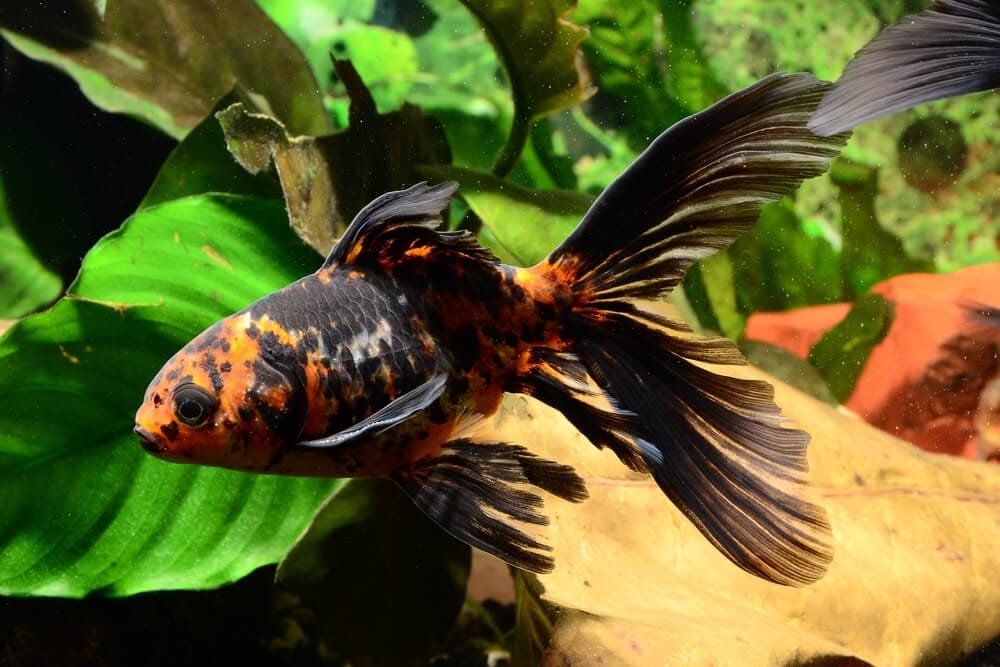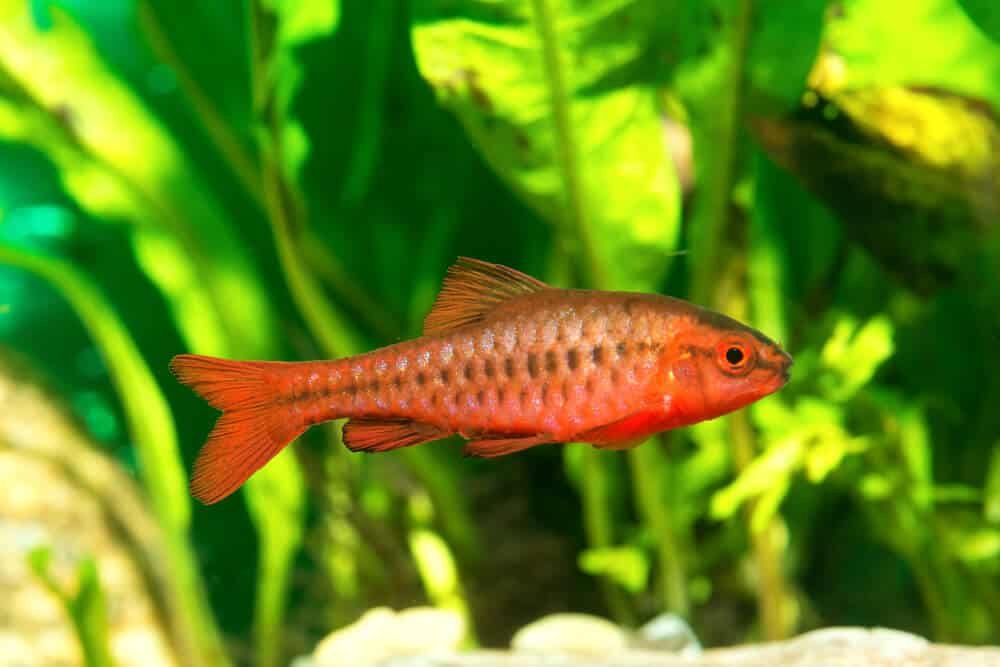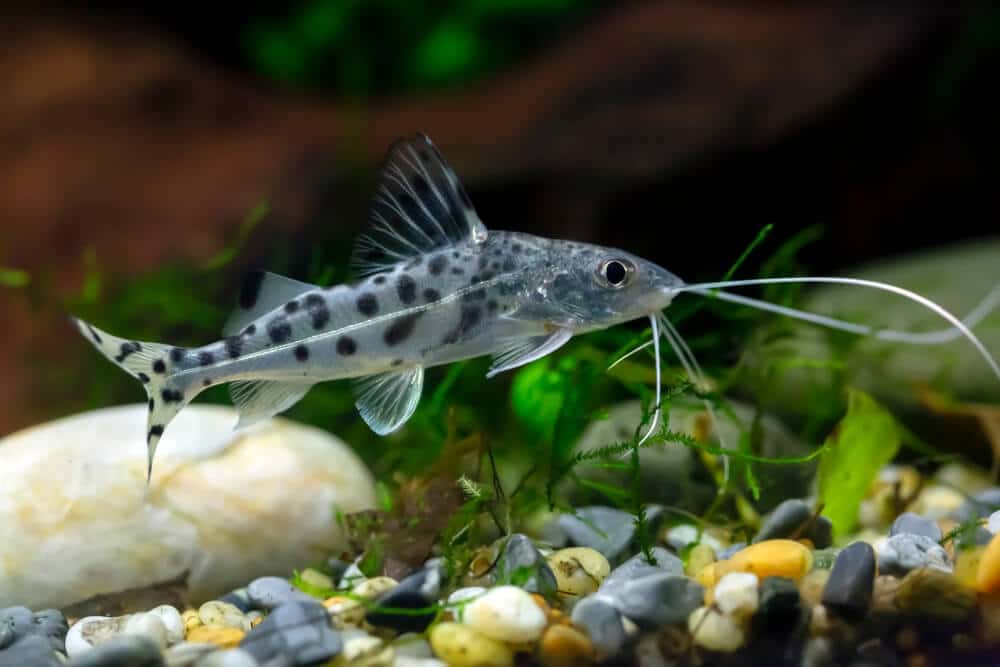Shubunkin Goldfish: Care Guide for Colorful Aquariums

Imagine a world where vibrant colors dance gracefully beneath the shimmering water’s surface. A world where elegance meets grace, and beauty comes in mesmerizing shades of red, orange, blue, and black. Enter the enchanting realm of the Shubunkin Goldfish, a captivating aquatic creature that effortlessly steals the show with its striking markings and graceful movements. With its glistening scales and flowing fins, this remarkable fish is truly a sight to behold. Dive into the world of the Shubunkin Goldfish and discover the magic that lies within its waters.
Appearance
Coloration
Shubunkin goldfish are known for their spectacular coloration. They have a mosaic pattern of red, blue, and white scales, which gives them a unique and eye-catching appearance. The colors are usually speckled or mottled, creating a beautiful display of hues. The red coloration is often more dominant, with patches of blue and white interspersed throughout the body. These vibrant colors make Shubunkin goldfish a popular choice for fish enthusiasts looking to add some color to their aquarium.
Body shape
Shubunkin goldfish have a distinct body shape that distinguishes them from other goldfish breeds. They have a long and slender body with a streamlined appearance, which allows them to move effortlessly through the water. The body is slightly elongated, and the dorsal fin is tall and pointed. The tail fin is forked, adding to their graceful and elegant appearance. Overall, their body shape is sleek and perfectly suited for their active and swift swimming style.
Natural Habitat
Origin
Shubunkin goldfish were first developed in Japan in the early 1900s. They are a result of crossbreeding the calico telescope goldfish with the common goldfish. This unique crossbreeding led to the creation of the stunning and colorful Shubunkin goldfish that we see today. Over the years, they have gained popularity worldwide and are now one of the most beloved goldfish breeds among fish enthusiasts.
Preferred environment
Shubunkin goldfish are hardy and adaptable, making them well-suited for various environments. They thrive in ponds, water gardens, and aquariums alike. However, they do require a spacious and well-maintained environment to truly flourish. Shubunkin goldfish prefer cool water temperatures between 65 and 75 degrees Fahrenheit (18-24 degrees Celsius). They also appreciate a well-oxygenated environment, so ensuring proper filtration and aeration is essential for their overall health and well-being.
Characteristics
Size
Shubunkin goldfish can grow to be quite large compared to other goldfish breeds. On average, they reach a length of 6 to 9 inches (15-23 centimeters) when fully grown. However, with proper care and a suitable environment, they can potentially grow even larger. It is important to consider their potential size when choosing a tank or pond for them, as they require ample space to swim and thrive.
Lifespan
With proper care, Shubunkin goldfish can live for 10 to 15 years. However, some individuals have been known to live up to 20 years or more. Their lifespan is influenced by factors such as water quality, diet, and overall care. Providing a healthy and stable environment for your Shubunkin goldfish will greatly contribute to their longevity.
Behavior
Shubunkin goldfish are active and social creatures. They are known for their lively and playful behavior, constantly exploring their surroundings and interacting with other fish. Shubunkins are energetic swimmers and need ample space to swim freely. They are also known for their jumping ability, so it is important to have a secure lid or cover on their tank or pond to prevent any accidents.
Feeding Habits
Dietary requirements
Shubunkin goldfish are omnivores and have a varied diet. They should be fed a balanced diet that includes a mixture of high-quality commercial fish pellets, live or frozen food such as bloodworms or brine shrimp, and fresh vegetables. It is important to avoid overfeeding them, as excessive food can lead to health problems. Providing them with a diverse and nutritious diet will help maintain their vibrant coloration and overall well-being.
Feeding frequency
Shubunkin goldfish should be fed small portions several times a day rather than a large meal all at once. This feeding schedule mimics their natural feeding behavior and allows them to consume the food more easily. It is recommended to feed them 2-3 times a day, making sure to adjust the quantity based on their size and appetite. Regularly monitoring their body condition and adjusting the feeding frequency accordingly is key to keeping them healthy and thriving.
Tank Setup
Tank size
Shubunkin goldfish require a spacious tank to accommodate their active swimming behavior and potential growth. For a single Shubunkin goldfish, a tank with a minimum capacity of 20 gallons is recommended. However, if you plan on keeping multiple Shubunkins or housing them with other fish, a larger tank is necessary. A general guideline is to have 10 gallons of tank capacity for each additional Shubunkin goldfish.
Water conditions
Maintaining optimal water conditions is crucial for the health and well-being of Shubunkin goldfish. They prefer clean and well-oxygenated water with a pH level of 7.0 to 8.4. The water temperature should be between 65 and 75 degrees Fahrenheit (18-24 degrees Celsius), as Shubunkins thrive in slightly cooler temperatures. Regular monitoring of water parameters and performing necessary water changes will help ensure a stable and healthy environment for your Shubunkin goldfish.
Filtration
A high-quality filtration system is essential for maintaining good water quality in the Shubunkin goldfish tank. The filtration system should be able to handle the tank’s capacity and efficiently remove toxins and waste products. A combination of mechanical, biological, and chemical filtration is recommended to ensure optimal water conditions. Regular maintenance and cleaning of the filtration system will help prevent any buildup or clogging that could impact water quality.
Decorations
Adding decorations to the Shubunkin goldfish tank not only enhances the aesthetic appeal but also provides hiding spots and enrichment for the fish. It is important to choose decorations that are fish-safe and have no sharp edges that could potentially harm the fish. Rocks, driftwood, and ceramic ornaments are popular choices for tank decorations. Additionally, you can create caves or tunnels using aquarium-safe piping, creating a stimulating environment that mimics their natural habitat.
Plants
Live plants can greatly benefit the overall health and well-being of Shubunkin goldfish. They help oxygenate the water, provide natural filtration, and create a more natural and aesthetically pleasing environment. However, it is important to choose hardy and fast-growing plants, as Shubunkins are known to nibble on vegetation. Anubias, Java Fern, and Hornwort are examples of commonly used plants that are suitable for Shubunkin goldfish tanks.
Compatibility
With other fish
Shubunkin goldfish are generally peaceful and can coexist with a variety of other fish species. However, it is important to choose tankmates that have similar care requirements and temperaments. Avoid keeping Shubunkins with aggressive or fin-nipping fish, as this can lead to stress or injury. Good tankmates for Shubunkins include other peaceful goldfish breeds, such as common goldfish and comet goldfish, as well as peaceful community fish like Danios, White Cloud Mountain Minnows, and Corydoras catfish.
With other goldfish breeds
Shubunkin goldfish can be kept with other goldfish breeds in the same tank. As long as the tank size and water conditions are suitable for all the fish, they can coexist peacefully. Mixing different goldfish breeds adds visual interest and diversity to the tank. However, it is important to note that some goldfish varieties, such as fancy goldfish with exaggerated features, may have slower swimming abilities compared to Shubunkins. Therefore, it is crucial to provide enough swimming space and monitor for any bullying or competition during feeding.
Common Health Issues
Swim bladder disorder
Swim bladder disorder is a common health issue that can affect goldfish, including Shubunkin goldfish. It is characterized by an imbalance in the swim bladder, which can cause the fish to float or sink uncontrollably. This condition can be caused by a variety of factors, such as overfeeding, poor water quality, or genetic predisposition. Maintaining a balanced diet, providing proper tank maintenance, and monitoring water quality can help prevent swim bladder disorder.
Ich
Ich, or white spot disease, is another common health issue that goldfish, including Shubunkins, can be prone to. It is caused by a parasitic protozoan that manifests as white spots on the fish’s body and fins. Ich can lead to irritation, stress, and even death if left untreated. Treating Ich usually involves raising the water temperature and using appropriate medications to eradicate the parasites. Quarantining new fish, maintaining good water quality, and avoiding overcrowding can help prevent the occurrence of Ich.
Fungal infections
Fungal infections can occur in goldfish, including Shubunkins, especially when there is a wound or injury on the fish’s body. It manifest as cotton-like growths or fuzzy patches on the affected areas. It is important to promptly treat fungal infections to prevent further complications. Using appropriate antifungal medications and improving water quality can help eradicate the fungus and support the fish’s healing process. Ensuring that the tank environment is clean and stress-free can help prevent fungal infections.
Breeding
Mating behavior
When it comes to breeding, Shubunkin goldfish exhibit courting and spawning behaviors. The males often chase the females, nudging and pushing them to initiate the spawning process. The females respond by releasing eggs, and the males release sperm to fertilize them. This dance-like behavior can be observed during the breeding season, which typically occurs in the spring and early summer. It is important to provide suitable breeding conditions, including a separate breeding tank with proper water parameters and spawning mop or vegetation for the eggs.
Egg-laying
Shubunkin goldfish are egg-layers, meaning they do not give birth to live young. After the eggs are fertilized, the female lays them onto the spawning mop or vegetation. The eggs are adhesive and will attach to the surface, where they will be guarded and cared for by the parents. It is essential to ensure that the breeding tank has enough hiding spots and plants to protect the eggs from being eaten by the parents or other tankmates.
Hatchery
The eggs laid by the Shubunkin goldfish will hatch within a few days, depending on water temperature and conditions. The newly hatched fry will initially consume their yolk sacs for nutrition. Once they have absorbed their yolk sacs, they will start feeding on infusoria or specialized fry food. It is important to carefully monitor water parameters and provide appropriate food for the fry to ensure their successful growth and development. Separating the fry from adult fish and providing suitable tank conditions will increase their chances of survival.
Varieties
Calico Shubunkin
Calico Shubunkin is a popular variety of Shubunkin goldfish known for its vibrant and diverse coloration. They have a striking mixture of red, orange, blue, and black markings that create a visually stunning appearance. The calico pattern can vary greatly from fish to fish, making each individual unique. Calico Shubunkins are highly sought after by goldfish enthusiasts for their beautiful and colorful patterns.
London Shubunkin
London Shubunkin is a variety of Shubunkin goldfish that originated in England. They have a predominantly metallic appearance with shades of blue, silver, and white. Unlike the calico variety, the London Shubunkin lacks the red and orange coloration. Their sleek and metallic scales give them an elegant and sophisticated look. London Shubunkins are prized for their graceful appearance and are often seen as a symbol of beauty.
Philadelphia Shubunkin
Philadelphia Shubunkin is a variety of Shubunkin goldfish that was developed in the United States. They share similarities with both the calico and London varieties. Philadelphia Shubunkins have a mix of metallic and calico patterns, combining vibrant colors like red, orange, blue, and white with metallic scales. This combination creates a unique and captivating appearance. Philadelphia Shubunkins are highly regarded for their eye-catching coloration and are a favorite among goldfish enthusiasts.
Maintenance Tips
Water quality monitoring
Regularly monitoring the water quality is crucial for the overall health and well-being of Shubunkin goldfish. This involves testing the water parameters, such as pH, ammonia, nitrite, and nitrate levels, using appropriate test kits. It is important to maintain stable and optimal water conditions by performing regular water changes, removing any debris or uneaten food, and addressing any sudden fluctuations in water quality promptly. Consistent water quality monitoring will help prevent potential health issues and ensure a thriving environment for your Shubunkin goldfish.
Regular tank cleaning
Keeping the tank clean is essential for the health and longevity of your Shubunkin goldfish. Regular maintenance tasks include removing any uneaten food, waste, and debris using a gravel vacuum or siphon. It is recommended to perform partial water changes on a weekly basis, replacing approximately 20-30% of the water. This helps maintain water quality and remove any accumulated toxins or pollutants. Additionally, cleaning and rinsing the filters and decorations periodically will contribute to a clean and healthy tank environment.
Summary
Shubunkin goldfish are a stunning and captivating addition to any aquarium or pond. Their unique coloration, graceful body shape, and lively behavior make them a favorite among fish enthusiasts. By providing them with a suitable environment, proper nutrition, and regular maintenance, you can enjoy the beauty and companionship of these magnificent fish for many years to come.





